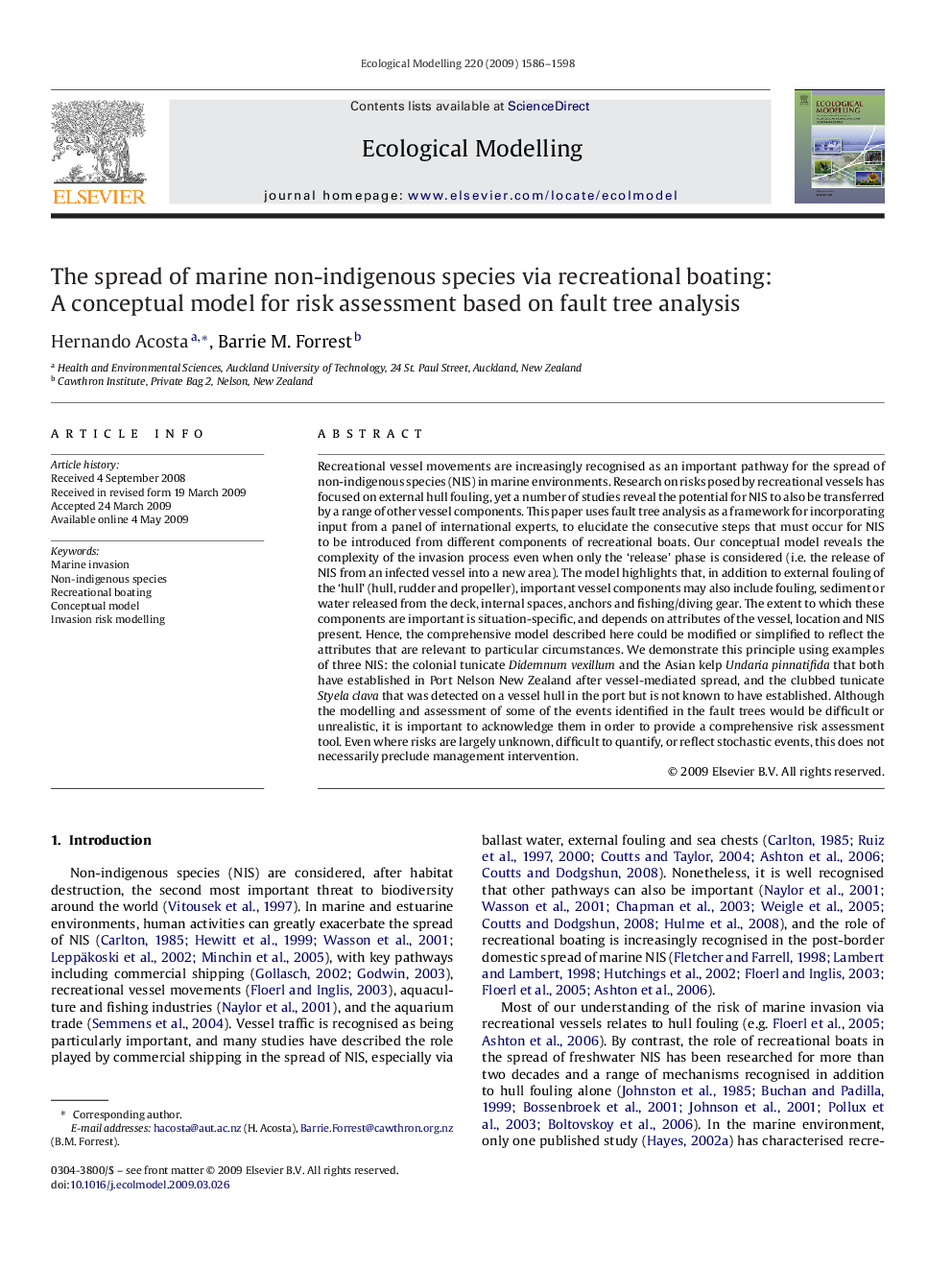| کد مقاله | کد نشریه | سال انتشار | مقاله انگلیسی | نسخه تمام متن |
|---|---|---|---|---|
| 4377738 | 1617523 | 2009 | 13 صفحه PDF | دانلود رایگان |

Recreational vessel movements are increasingly recognised as an important pathway for the spread of non-indigenous species (NIS) in marine environments. Research on risks posed by recreational vessels has focused on external hull fouling, yet a number of studies reveal the potential for NIS to also be transferred by a range of other vessel components. This paper uses fault tree analysis as a framework for incorporating input from a panel of international experts, to elucidate the consecutive steps that must occur for NIS to be introduced from different components of recreational boats. Our conceptual model reveals the complexity of the invasion process even when only the ‘release’ phase is considered (i.e. the release of NIS from an infected vessel into a new area). The model highlights that, in addition to external fouling of the ‘hull’ (hull, rudder and propeller), important vessel components may also include fouling, sediment or water released from the deck, internal spaces, anchors and fishing/diving gear. The extent to which these components are important is situation-specific, and depends on attributes of the vessel, location and NIS present. Hence, the comprehensive model described here could be modified or simplified to reflect the attributes that are relevant to particular circumstances. We demonstrate this principle using examples of three NIS: the colonial tunicate Didemnum vexillum and the Asian kelp Undaria pinnatifida that both have established in Port Nelson New Zealand after vessel-mediated spread, and the clubbed tunicate Styela clava that was detected on a vessel hull in the port but is not known to have established. Although the modelling and assessment of some of the events identified in the fault trees would be difficult or unrealistic, it is important to acknowledge them in order to provide a comprehensive risk assessment tool. Even where risks are largely unknown, difficult to quantify, or reflect stochastic events, this does not necessarily preclude management intervention.
Journal: Ecological Modelling - Volume 220, Issues 13–14, 17 July 2009, Pages 1586–1598